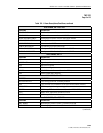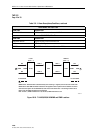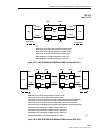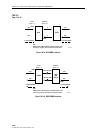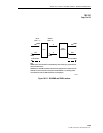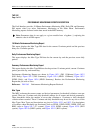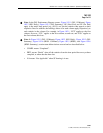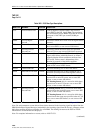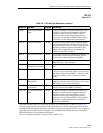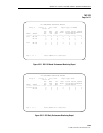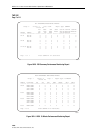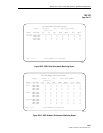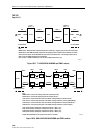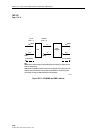
ADCP-61-471 • Issue 4 • June 2000 • Section 2: Operation and Maintenance
2-303
© 2000, ADC Telecommunications, Inc.
TAP-102
Page 4 of 11
Table 102-1. DS1 Mon Type Descriptions, continued
MON TYPE MEANING LOCATION DESCRIPTION
UASP Unavailable Second
Path
NEND A count of second(s) in which the DS1 signal is not
available. A signal becomes unavailable upon the
completion of ten consecutive SESPs. A signal
becomes available again at the completion of ten
consecutive seconds with no SESPs. When a path is
unavailable, no other PM counts are maintained.
FCP-FE Failure Count Path FEND A count of Loss Of Frame (LOF) or Remote Alarm
Indication (RAI) failures within the interval. This is
also called a Yellow alarm. A failure is counted when
the failure condition transitions from OFF to ON.
Failure count is independent of the duration (in
seconds) of the failure condition.
ESL-FE Errored Second Line FEND A second in which there occurred one or more BPVs, one
or more EXZs, or one or more LOS defects. Derived
from Line Code violation indicator in the PRM.
CVP-FE Code Violation Path FEND Count of CRC errors in ESF format. Derived from
PRM GBIT (G1 – G6) indicators.
SEFSP-FE Severely Errored
Framing Second Path
FEND Derived from PRM Severely Errored Framing Event
(SE).
ESP-FE Errored Second Path FEND This is a second in which there occurred one or more
CVP errors, one or more SEF defects, or one or more
AIS defects. Derived from PRM G1 - G6, SE, or Slip
Event (SL) indicator, or the occurrence of an RAI
failure.
SESP-FE Severely Errored
Second Path
FEND This is a second in which there occurred more than
some user-specified value of CVP errors, one or more
SEF defects, or one or more AIS defects.
CSSP-FE Controlled Slip
second Path
FEND A second in which one or more controlled frame slips
occurred. Derived from PRM SL indicator.
UASP-FE Unavailable Second
Path
FEND A count of second(s) in which the DS1 signal is not
available. A signal becomes unavailable upon the
completion of ten consecutive SESPs. A signal
becomes available again at the completion of ten
consecutive seconds with no SESPs. When a path is
unavailable, no other PM counts are maintained.
Derived from SESP-FEs.
Note: DS1 Path Parameters are collected at the HLXC for both directions, as shown in Figure 102-7.
Note: Far-end parameters are not derived from defects detected in the incoming signal but rather from
the PRM (Performance Report Messages) embedded in the incoming signal from the far end. A Remote
Alarm Indication condition disallows reception of a valid PRM. The framing format must be ESF for
FEND information to be transmitted and displayed.
Note: For complete information on counts, refer to ANSI T1.231.



